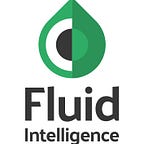Proactive maintenance is about securing the future
With proactive maintenance you can address use of equipment that is seen risky and other deteriorating development. The aim is to avoid the root causes of damage and all the conditions in which damage can occur. How are then disruptions and problems prevented before they escalate?
The performance of the oil used by different equipment may vary considerably even between similar installations. Proactive interference with problems that are found to escalate into serious damage in the future can ensure the smooth operation of the equipment and the entire production process of the organization.
Fluid Intelligence’s Fluid Monitoring solution supports proactive maintenance by providing real-time monitoring of oil performance. The aim of the monitoring is to ensure the oil performance and the overall operating condition of the equipment.
Interference and problems prevented before they escalate
However, proactive maintenance is not just a more accurate control of the equipment. It involves careful analysis of the production process and intervening with the risk factors of the equipment. In a production environment equipment is often used in highly challenging circumstances, where addressing risk factors often requires a comprehensive understanding of the process.
For the organization proactive maintenance is a challenge. Often in practical work, one has to concentrate on the problems occuring here and now. The traditional views on maintenance work are challenged as proactive maintenance focuses in very different areas. Therefore, proactive maintenance requires a broader commitment from the whole organization.
Proactive maintenance focuses on the future, foresight and the elimination of potential disturbances. In practical work, this is reflected in measuring, monitoring, designing and analyzing. Attention is paid to how things are done, sometimes as an alternative to the easiest solution.
Proactive maintenance requires a broader commitment of organization to the whole. From the floor level to the leadership, everyone has to commit themselves to long-term goals and continuous improvement in all stages of the work. On the other hand, this also brings challenges, because proactive maintenance requires long-term investment that will initially raise costs but produce long-term savings.
The benefits of proactive maintenance
- Reduces unplanned downtime
- The planned maintenance is cheaper
- The focus of the organization remains in productive operations and continuous improvement of operations
Why is oil performance remote monitoring important?
Oil — in lubrication, in power transmission, as heat transfer or as insulator — passes through the critical parts of the machine, carrying information about the condition of the system. Particularly in problem situations, the system discharges small particles that can be interpreted in order to maintain the performance of the equipment.
Automated monitoring supports maintenance organizations and enables development of a maintenance strategy towards a proactive model. Proactive maintenance of the future will give the organization at its best the foresight, reliability, ease and let’s organization focus on its own special areas of expertise.
The Fluid Monitoring solution is a cost-effective and easy way to assure the consistency of oil performance with the requirements of different installations. Fluid Monitoring provides the customer with a continuous view of equipment, that has previously been unavailable. In practice, real-time Fluid Monitoring offers significant benefits over the traditional model:
- Cost-effective and clear monitoring model
- Comparability and detection of anomalies between targets is easier
- Changes in individual equipment values are detected immediately
- The detection of problems root causes is easier
- Substantial changes can be dealt with in peace
- The organization has time to consider the best options to ensure the reliability of the equipment
Originally published at fluidintelligence.fi.
